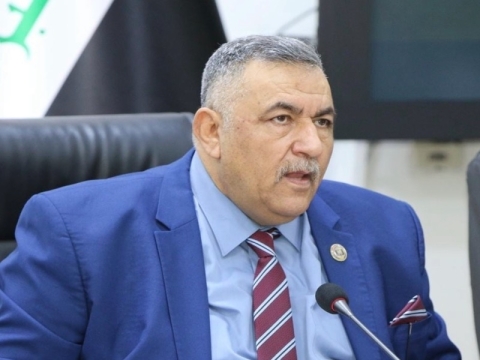Politics
Migration Governance as a Tool for Sustainable Development
Opportunities and Challenges

Article issue
USPA NEWS -
Introduction
In an era of accelerating global transformations, compounded by deepening crises of poverty, conflict, and climate change, migration has become an inevitable phenomenon—one that cannot simply be curtailed or ignored through legislation alone. Migration is no longer just the movement of individuals from one place to another; it has evolved into one of the most significant social, economic, and political phenomena reshaping societies in our contemporary world. While some discourses portray migration as a threat that must be controlled, a vast body of international studies and reports assert that when migration is managed effectively, it can contribute substantially to development—not only for migrants themselves but also for host countries and countries of origin.
In an era of accelerating global transformations, compounded by deepening crises of poverty, conflict, and climate change, migration has become an inevitable phenomenon—one that cannot simply be curtailed or ignored through legislation alone. Migration is no longer just the movement of individuals from one place to another; it has evolved into one of the most significant social, economic, and political phenomena reshaping societies in our contemporary world. While some discourses portray migration as a threat that must be controlled, a vast body of international studies and reports assert that when migration is managed effectively, it can contribute substantially to development—not only for migrants themselves but also for host countries and countries of origin.
This is precisely where the concept of migration governance gains significance: the management of migration through fair, sustainable, and comprehensive policies that take into account the needs of states and societies while simultaneously upholding human dignity and fundamental rights. Given that migration affects millions of people across the globe, addressing it cannot remain subject to reactive measures or narrow national interests. Instead, it requires a long-term vision and an understanding of the critical role migration can play in achieving the Sustainable Development Goals (SDGs)—those adopted by the United Nations in its 2030 Agenda, which emphasize that safe, orderly, and regular migration is a key driver of justice, growth, and stability.
Thus, when we speak of migration governance, we are not merely referring to border control, increased security measures, or the issuance of work permits. Rather, we are referring to a comprehensive approach to managing migration as a developmental pathway. Migration, by its nature, is a response to imbalances—whether economic, political, environmental, or social. When this movement is managed with awareness and inclusivity, it can generate significant economic benefits, whether through labor that fills workforce gaps in host countries or through the financial remittances migrants send back to their families—remittances that often represent a lifeline to the economies of their countries of origin.
Yet, the contributions of migration go beyond money transfers. Migrants bring with them knowledge, skills, and sometimes new values, enriching the social and intellectual fabric of the societies they settle in. Communities that succeed in integrating migrants—instead of isolating or criminalizing them—often become more dynamic, diverse, and innovative. Additionally, some developing countries directly benefit from returning migrants who contribute to local development through entrepreneurial projects or by transferring modern technologies and knowledge.
However, this positive scenario does not always materialize. There are structural challenges that hinder the effectiveness of migration governance. Chief among these is the lack of international coordination. Migration policies differ widely from one country to another, and at times even contradict one another. This inconsistency leads to chaotic migration management and pushes many individuals toward irregular and dangerous migration routes. Furthermore, migration has increasingly become a politicized issue, often weaponized in electoral campaigns. Such manipulation fuels xenophobic narratives that associate migrants with terrorism, unemployment, or crime—a discourse that undermines truth and development alike, deepening societal divisions and producing fear-based, rather than rational, policies.
Moreover, some policies are marked by the deliberate disregard for human rights. Migrants are often detained under inhumane conditions, denied access to essential services like education and healthcare, or exploited in labor markets without legal protection. This form of governance is not only unethical—it is also ineffective. It breeds resentment and alienation, preventing societies from harnessing the potential that migrants bring.
Effective migration governance must therefore be grounded in a holistic perspective—one that sees migration not as a crisis to be suppressed, but as a component of global developmental dynamics. This necessitates genuine political will, true international cooperation, and the inclusion of both host communities and migrants themselves in shaping the policies that affect their lives. It also requires a fundamental acknowledgment that sustainable development cannot be achieved in environments where segments of the population are excluded based on their nationality or legal status.
Effective migration governance must therefore be grounded in a holistic perspective—one that sees migration not as a crisis to be suppressed, but as a component of global developmental dynamics. This necessitates genuine political will, true international cooperation, and the inclusion of both host communities and migrants themselves in shaping the policies that affect their lives. It also requires a fundamental acknowledgment that sustainable development cannot be achieved in environments where segments of the population are excluded based on their nationality or legal status.
Conclusion
Migration governance is not an administrative luxury or a technical matter to be handled by governments alone. It is a profound moral and political challenge that strikes at the heart of justice and human dignity. In an increasingly interconnected and interdependent world, borders can no longer contain the movement of people, nor can security-based approaches alone manage such a complex phenomenon. What is required today is a redefinition of the relationship between people and place, between the right to move and the right to remain, between national interests and global responsibilities.
When we come to understand that migration is not a threat but an opportunity, that migrants are not a burden but an integral part of the solution, we take a vital step toward building a more just and compassionate world. Governance that does not place human beings at its core remains inadequate, regardless of how sophisticated its tools may be. But governance inspired by the principles of sustainable development has the potential to transform migration into a bridge—one that connects North and South, dream and reality, need and dignity.
Migration governance is not an administrative luxury or a technical matter to be handled by governments alone. It is a profound moral and political challenge that strikes at the heart of justice and human dignity. In an increasingly interconnected and interdependent world, borders can no longer contain the movement of people, nor can security-based approaches alone manage such a complex phenomenon. What is required today is a redefinition of the relationship between people and place, between the right to move and the right to remain, between national interests and global responsibilities.
When we come to understand that migration is not a threat but an opportunity, that migrants are not a burden but an integral part of the solution, we take a vital step toward building a more just and compassionate world. Governance that does not place human beings at its core remains inadequate, regardless of how sophisticated its tools may be. But governance inspired by the principles of sustainable development has the potential to transform migration into a bridge—one that connects North and South, dream and reality, need and dignity.
References
1. United Nations. (2015). Transforming our world: the 2030 Agenda for Sustainable Development.
2. International Organization for Migration (IOM). (2022). World Migration Report 2022.
3. Global Compact for Safe, Orderly and Regular Migration (GCM), United Nations, 2018.
4. OECD. (2020). International Migration Outlook 2020.
5. Castles, S., de Haas, H., & Miller, M. J. (2014). The Age of Migration: International Population Movements in the Modern World (5th ed.). Palgrave Macmillan.
6. Betts, A., & Collier, P. (2017). Refuge: Transforming a Broken Refugee System. Penguin Books.
1. United Nations. (2015). Transforming our world: the 2030 Agenda for Sustainable Development.
2. International Organization for Migration (IOM). (2022). World Migration Report 2022.
3. Global Compact for Safe, Orderly and Regular Migration (GCM), United Nations, 2018.
4. OECD. (2020). International Migration Outlook 2020.
5. Castles, S., de Haas, H., & Miller, M. J. (2014). The Age of Migration: International Population Movements in the Modern World (5th ed.). Palgrave Macmillan.
6. Betts, A., & Collier, P. (2017). Refuge: Transforming a Broken Refugee System. Penguin Books.
Liability for this article lies with the author, who also holds the copyright. Editorial content from USPA may be quoted on other websites as long as the quote comprises no more than 5% of the entire text, is marked as such and the source is named (via hyperlink).






